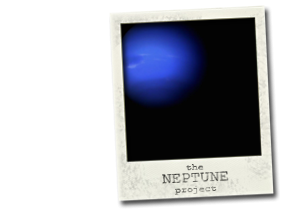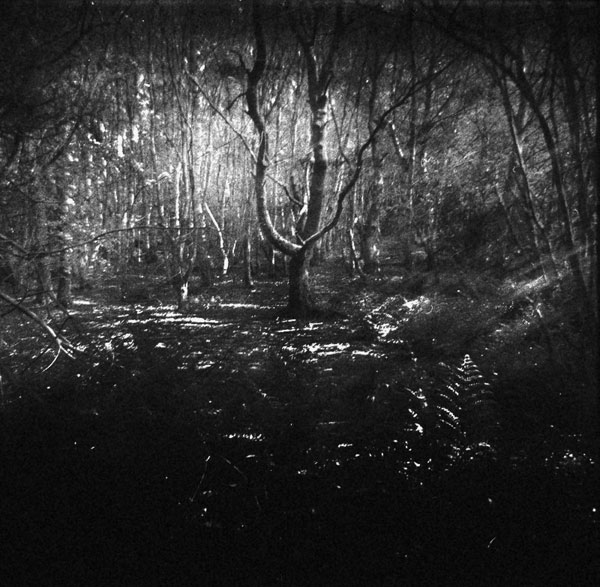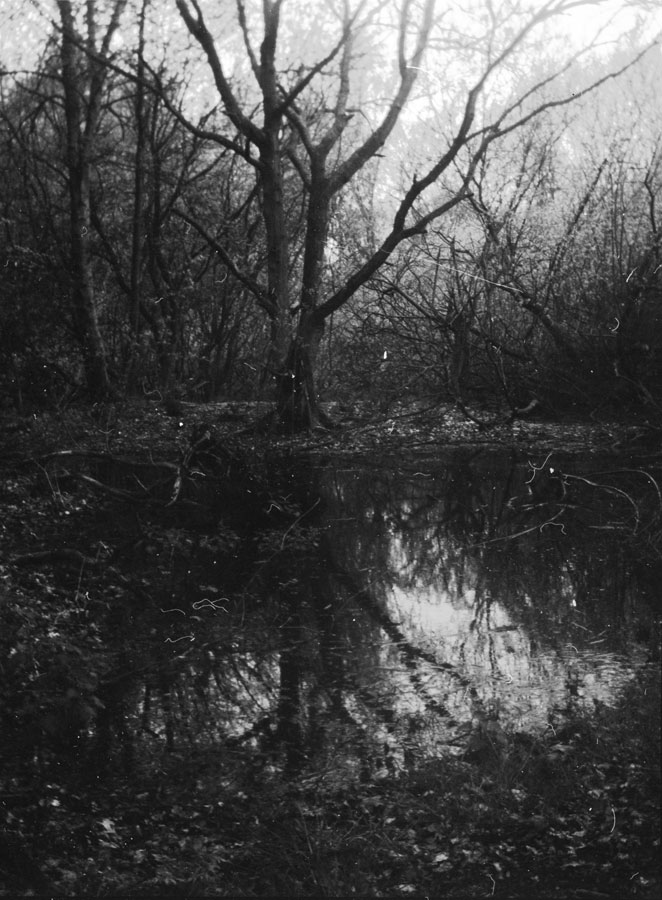Category Archives: Medium Format
Ensign Ful-Vue Super in Monochrome
After the roaring success of the Ful-Vue Super in colour (Ektar, to be precise), I decided to give it a go in black and white. So I filed down a roll of Ilford HP5 120 film to fit (it being a 620 medium format camera), loaded it up and off I went. (Home-developed in Ilford LC29 and home-scanned).
The results can be found here. But here are one or two to be going on with:
The only problem I had is that once again it began sticking and slipping at around exposure 4, and by number 10 I had to give up winding on, so I have lost 2 shots per roll so far. And on a roll of film that only contains 12 exposures anyway, that’s a pricey fault!
I suspect that the culprit is the filed down 120 film. 120 comes on a much thicker spool and I don’t think the more streamlined mechanism is coping with it at all well, so for the next roll, I’m going to have to attempt respooling 120 film onto a 620 spool. I am assured that once you’ve got the hang of it there’s really nothing to it…
*gulp*
![]()
Wish me luck!
A Tribute to Alice
 Here is a shot of Alice from a roll of HP5 taken with the Kodak Brownie Six-20 model D, of which I have two copies procured from a local antique shop, neither costing more than the price of a lifestyle coffee in the city.
Here is a shot of Alice from a roll of HP5 taken with the Kodak Brownie Six-20 model D, of which I have two copies procured from a local antique shop, neither costing more than the price of a lifestyle coffee in the city.
Alice is a great photographic subject, which somebody pointed out to me yesterday. It is not that I’m unaware of how strong and refined she is. Her calm, poise and her peaceful nature are easy to get used to, but they sometimes really show in a photograph too.
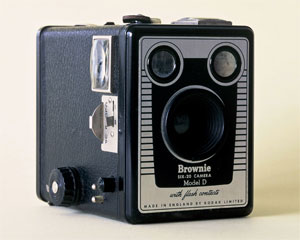 I will put up a few more shots from this roll later. It is remarkable to consider that the camera is several decades old and hasn’t even been particularly valued or cared for in most of that time. I have much more expensive and high-end cameras than this but even so, they can’t compete with some of the old-timers for sheer style and elegance.
I will put up a few more shots from this roll later. It is remarkable to consider that the camera is several decades old and hasn’t even been particularly valued or cared for in most of that time. I have much more expensive and high-end cameras than this but even so, they can’t compete with some of the old-timers for sheer style and elegance.
A bit like Alice in fact.
Bencini Comet IIS loaded with 35mm Fujicolor C200
Once again, a steep learning curve ![]()
It wasn’t until I’d developed the film that I realised how much of the shot you lose to the top and bottom when shooting 35mm in a 127 medium format camera. So I’ve lost heads and feet… But, fortunately, most of the shots I took were either landscapes or far enough away not to be too significant.
This was a seriously fun experiment.
I’ll talk you through it.
I started off with a dark-bag, a canister of 36 exp Fujicolor C200 film, a 127 spool and used roll of backing paper, scissors, an empty plastic film canister, and a length of string with which to measure the amount of film I needed for the roll. I had already marked the backing paper with masking tape where the film needed to begin and where it would end and, in the dark-bag, I used that tape to fix it to the backing paper. I opened the canister, used the string to measure out the amount I needed, cut it off the rest of the roll and put the remainder into the black plastic film pot (which I marked with its contents). Then I fixed it, as mentioned, to the backing paper and wound it on to the spool. Which is all jolly good fun and gives a whole new lease of life to the expression ‘fumbling in the dark’.
Once it was wound really tight, I could use a little more masking tape to secure it, and then it was ready to load into the camera. A friend-in-the-know (that’s you, Juliet) mentioned that, since the 35mm is a more sensitive film, you need to cover the red window with some dark tape (I used electrical tape) and peel it back in subdued lighting in order to wind the film on to the next frame. This worked well.
Here are a couple of the shots (you can find the rest here and, for the sake of a laugh, if nothing else, I have included the headless shots ![]() ):
):
Bencini Comet II S and Rollei 80s Retro 127 film
Well, you live and learn. ![]()
I got ridiculously excited about this camera partly, I suspect, because it is *so* beautiful. Bright and shiny and small, with smooth motion and very simple mechanisms. But each time you use a new camera you are, of course, unaware of its capabilities or limitations.
This camera and film combination, I have discovered, is not much good for taking pictures of people. But photographs of architecture, under the right conditions, can be lovely. The lens on my copy is not very sharp, nor the focusing very accurate or easy, but I suspect that beautiful results could be achieved with a rich colour film and some woodland / countryside.
Out and about in Norwich yesterday, I saw this chalkboard and the one in the shop window and thought them rather charming. This, I believe, is one of the shots that came out best.
This one, too, I liked, of the Belgian Monk and the church next to it.
The rest of the roll can be found here.
I have just done something that felt rather brave and risky. In a dark bag, I spooled some 35mm film onto a 127 spool and backing paper, and I’ve loaded it into the Comet. Another experiment in the offing… ![]()
Ensign Ful-Vue Super – the results are in!
I wrote about the Ensign Ful-Vue before. In short: saw it, loved it, used it, was totally underwhelmed by the results.
 Then Jem surprised me with an Ensign Ful-Vue Super; a slimmer, smaller, more streamlined version with a twisting focusing lens and viewfinder cover. Whilst I appreciated its obvious beauty, I’d been seduced and disappointed by its predecessor, so I approached this one with a little more reticence. I filed down a 120 roll of Kodak Ektar to fit, as it takes 620 film, loaded it up and off we went.
Then Jem surprised me with an Ensign Ful-Vue Super; a slimmer, smaller, more streamlined version with a twisting focusing lens and viewfinder cover. Whilst I appreciated its obvious beauty, I’d been seduced and disappointed by its predecessor, so I approached this one with a little more reticence. I filed down a 120 roll of Kodak Ektar to fit, as it takes 620 film, loaded it up and off we went.
The only real problem I encountered is that the take-up spool began slipping before I was halfway through the film. By exposure 10 neither gentle persuasion nor brute force was going to budge it. Since it was loaded with Ektar and we haven’t got as far as home-developing colour film yet, we were taking it to the shop for a develop only, and I was tasked with removing it from the camera and putting it in a light-tight case inside a dark-bag at the shop counter. This, I discovered, was a very different experience from the privacy of my own kitchen table! Thankfully, it went without a hitch, and when we examined the camera afterwards, it was quite obvious that the pins that turn the take-up spool have bent upwards and are no longer gripping effectively. Jem assures me this won’t take much to fix. ![]()
So home we went to scan our films and I was incredibly happy with the results.
This is the portrait I attempted, bright sun outside, in our bedroom window, my eldest son. The tones, colours and sharpness were a real surprise. I should add that I don’t believe it has a light-leak, in spite of the fact that this exposure appears to have one. Rather, I believe I left the counter window open in bright sunlight, which has flooded this shot somewhat. Oops! You live and learn, eh? ![]()
And here is an example of how well it works in a sun-flooded room:
It also has a lovely quality when photographing buildings:
You can find these and some other shots from the roll here.
Ensign Ful-Vue – or – don’t judge a camera by its looks…
I’ve come to a realisation lately. I have been seduced, endlessly, by the beauty of old cameras, but the truth is a universal one:
Don’t judge a camera by its looks. ![]()
I have been disappointed by two notably: The Kodak Brownie Reflex 20 and the Ensign Ful-Vue. The fact is that they have utterly stunning viewfinders but the end results – the shots themselves – are totally underwhelming. If a photograph looked like its image in the viewfinder, if the judging of the camera were that simple, wouldn’t we all be incredible photographers!
The Ensign Ful-Vue has possibly the most beautiful viewfinder I’ve yet seen. I was wildly optimistic when I took it for its test run, and I restored it lovingly before I had seen the results, the best of which I am posting here.
Conversely, the Halina Paulette, which looks a little like a toy camera and has an innocuous and unconvincing shutter sound, not to mention the most pathetic little viewfinder which has no bearing on the lens either (manual focus according to distance from subject), can produce some stunning results.
So… the moral of the story?
Well, actually, there isn’t one! The Lomo Lubitel2 has a beautiful viewfinder and produces gorgeous results, so… at best the moral is: don’t be attached to the results – just suck it and see. ![]()
Lo-Fi
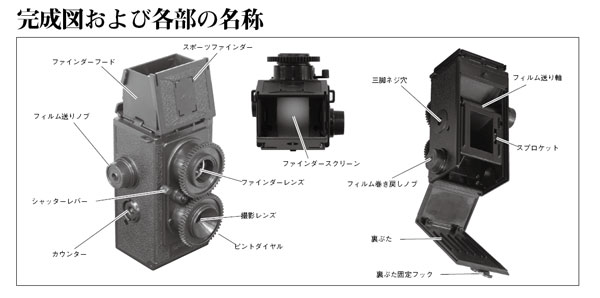 The more cameras I use, the greater my respect for lo-fi photography as a truly viable pursuit. Composition remains true regardless of the lens, and I love the Neptune end of the photographic polarity. That is of course photography’s natural state: chemical uncertainty. The rush to the wrong end of the polarity, toward Virgo and ever greater control, more megapixels, less chromatic aberration, instant verifiable results with the inconveniences cloned out after the fact in Photoshop is getting photography backward.
The more cameras I use, the greater my respect for lo-fi photography as a truly viable pursuit. Composition remains true regardless of the lens, and I love the Neptune end of the photographic polarity. That is of course photography’s natural state: chemical uncertainty. The rush to the wrong end of the polarity, toward Virgo and ever greater control, more megapixels, less chromatic aberration, instant verifiable results with the inconveniences cloned out after the fact in Photoshop is getting photography backward.
Recently I bought a Gakkenflex (pictured) which came originally from Japan. When first made this 35mm ‘Toy-TLR’ retailed for about 6 or 7 dollars, and was made entirely of plastic from a kit in a magazine. There are clones out there which give the same result for not much more. I also bought a Japanese Superheadz Black Devil and I took them both out today along with a 1956 Kodak Cresta II. There is simply no hope of controlling outcomes with any of these cameras, except in the most rudimentary terms. All you have is composition, and an understanding of which light will work, and which won’t.
And that is exactly what makes lo-fi photography so much fun, it has all the magical promise of uncertainty.
Ensign Ful-Vue
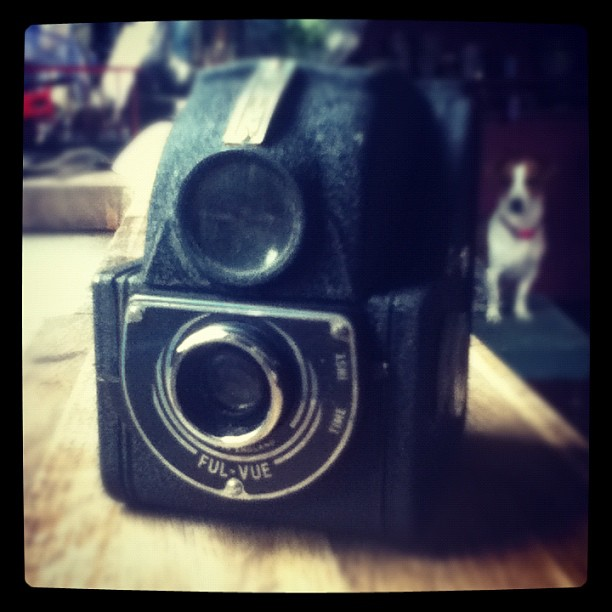 Last week, whilst trawling our local antique (and junk) shops, Jem came across this funky little camera, which he promptly bought for a fiver (“Well… it would have been rude not to!”) and which I promptly fell in love with. My instant love-affair with it meant he gifted it straight to me.
Last week, whilst trawling our local antique (and junk) shops, Jem came across this funky little camera, which he promptly bought for a fiver (“Well… it would have been rude not to!”) and which I promptly fell in love with. My instant love-affair with it meant he gifted it straight to me. ![]()
Yesterday I loaded it up with expired Ilford XP2 film, which is our usual M.O. if we aren’t yet sure if a camera works properly or not, and off we went to try out our very old cameras: Jem was using his Box Brownie for the first time.
This little gem was made between 1946 and 1949. It is a TLR with a beautiful big Brilliant-style reflex viewfinder on the top. It is a unique thing – pretty avant-garde for its time – as it was the first ‘streamlined’ box-style camera of its type. It has a fixed shutter of 1/30th of a second and a fixed aperture of f11. Rather charmingly, if you pull the tiny lens out a little way, you can take close-ups of 3-9 feet, and push it back in for 9 feet or more.
My first hurdle, upon taking it out of my bag for the first shot, was discovering that the mirror has come loose and was rattling around inside the viewfinder compartment. Nothing I can do about that until I’ve finished the roll, so for now I have to give it a gentle shake to reposition it and take my shots *very* carefully…. Of course I can’t be entirely sure it’s back in perfect position either, so there may be some funny angles resulting from this experiment!
I’m halfway through the roll, and hope to have it finished, developed and the results posted up here some time next week.
